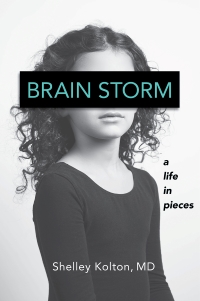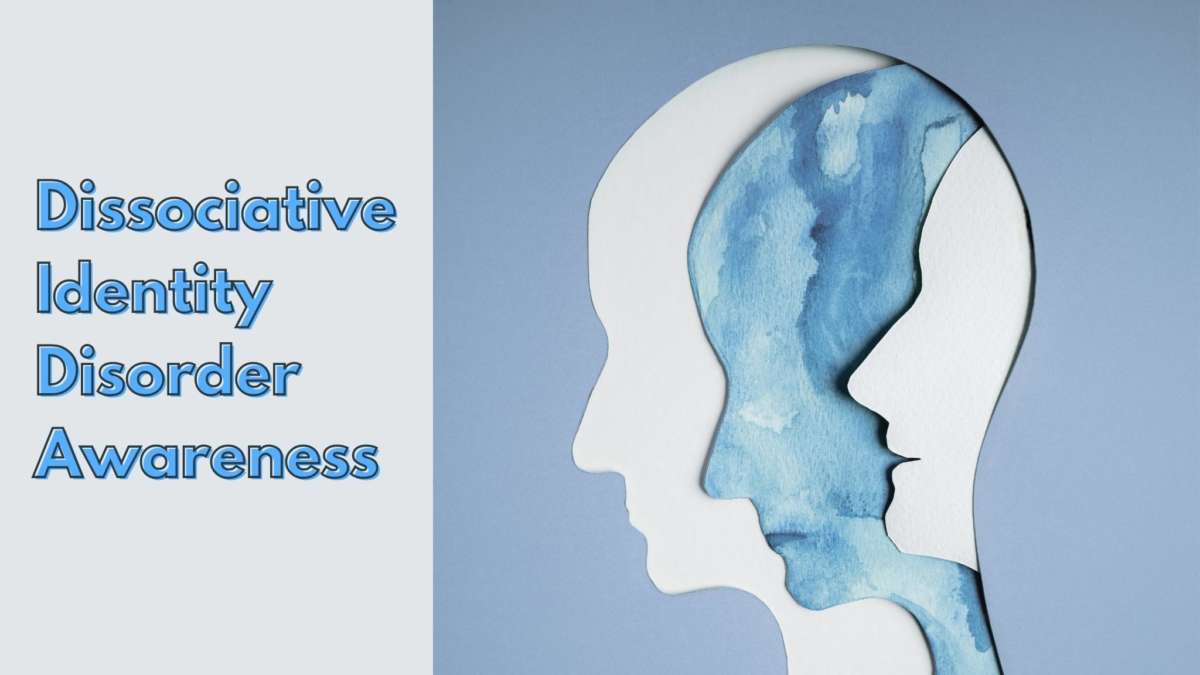Brain Storm: A Life in Pieces by Shelley Kolton
Dissociative Identity Disorder (DID) remains one of the most misunderstood and misdiagnosed mental illnesses. It wasn’t long ago that it was called “multiple personality disorder,” a label that never really captured the complexity and variety of its manifestation in patients, not to mention its root causes.
In popular culture, people with DID are often portrayed as “Dr. Jeckyll/Mr. Hyde” characters whose “alters” are capable of horrific things. This couldn’t be further from the truth. The brains of people affected by the disorder have created these alters for one purpose — protecting themselves psychologically from horrific things that have been done to them. It is a coping mechanism for severe, and usually prolonged, abuse or trauma, and is most often found among those who experienced these events as children.
What’s worse, many who have the disorder don’t know they have it, and therapists often mistake the symptoms for schizophrenia, bipolar disorder or borderline personality disorder, among other conditions. Some patients will develop eating disorders or addictions, further complicating diagnosis.
SYMPTOMS, PREVALENCE AND WHERE TO GET HELP
And yet, DID is more common than you might think. It is estimated that one out of 50 people suffers from some form of the disorder. Symptoms may include amnesiac memory lapses; traumatic flashbacks; feelings of detachment from self, others or reality itself; and the depression, anxiety and/or suicidal ideation that accompanies many other mental illnesses.
DID Awareness Day (March 5) was established to educate the public about the illness, what causes it, and how to get help for yourself or loved ones you suspect may suffer from it. The websites for the International Society for the Study of Trauma and Dissociation (ISSTD) and The Sidran Institute have a wealth of information about DID and can connect you to therapists, support groups and other resources that can help.
THE FASCINATING STORY OF A SUCCESSFUL DOCTOR WITH DID

We at BookTrib have been honored to work with many memoirists who have laid bare their personal experiences with various forms of mental and physical illnesses. Today, we’d like to honor Shelley Kolton, MD, whose memoir, Brain Storm: A Life in Pieces (FLR Press) moved us deeply (read our review here).
In it, the successful OB/GYN recounts her discovery of her many selves and the forgotten childhood traumas at their root. It is a fascinating story of one survivor coming to terms with her diagnosis and the many ways her trauma and illness had manifested themselves in her life. Along the way, we learn about the disorder, the horrific ritualized abuse that caused it, what it’s like to live with DID and what it takes to heal.
On the apt occasion of DID Awareness Day, Dr. Kolton has kindly allowed us to reprint the following excerpt, which has been modified for use on our site. Please be advised that it contains references to child sexual abuse that may be triggering for some readers.
—∞—
“My Gang Speaks” from Brain Storm: A Life in Pieces by Shelley Kolton, MD
The first time it happened, I sat only a few feet away from my therapist, Yael, in her tiny office, a position that usually made me feel safe, but this time I was about to explode.
“Shelley, what’s going on?”
I couldn’t squelch my intense agitation. “I feel like I’m going to jump out a window!”
“You’re safe here, and there are no windows. Why are you so panicked?”
I couldn’t respond and my head felt weird, like something was crawling up the back of my hair. I spaced out and disconnected from my body. For a moment, it was a pleasant kind of high. Then, I watched incredulously as a little girl appeared in my place on the chair.
“Hi,” she said in her tiny voice.
Very softly, Yael replied, “Hi.”
I sat there. My legs pulled up under me. I was small.
“Who are you? Do you have a name?”
“Little Girl.”
As I spoke the words, I saw myself, sitting on a daybed in a sunny room on the second floor of the two-story house next door to my childhood home in Fresh Meadows. I could hear footsteps and knew Jack Watkins was about to come through the door. He was a big, ugly bald man dressed in khaki shorts and a graying white T-shirt with armpit stains. I was three. He was ageless to me then, but likely in his early thirties. In the memory, I knew what was about to happen, and I came to understand it meant this was not my first encounter with Jack, although it was the first memory to return to me. He dropped his shorts, made me lay down. And when he was done, he cleaned me up and carried me downstairs to his living room.
Yael was visibly nauseated as I stammered out my recollections as best I could, still feeling like I was only three years old. When I’d finished, she asked, “Are you okay?”
I couldn’t answer.
She waited patiently. Our session had ended, but she now sat across from a three-year-old child who had to go back to work—patients to see and medical procedures to perform—before she picked up her kids from afterschool care.
Yael finally asked, “Is Shelley here?”
I tried to break into Little Girl’s space because I knew I had to grow up. My head was stuffed with thoughts about what I had heard—me. I was somehow there but not there. I was unsure if I remembered everything Little Girl had said, but I knew I had to answer Yael.
“Yes.”
“Hi. Are you Shelley?”
I nodded. Still spacey. Voices rumbled in my head and I was aware for the first time that there seemed to be others, perhaps many others, speaking within me, living inside me.
“Do you remember my meeting Little Girl?”
I nodded again.
“Can you come back and speak to me, so I know that you are safe to go?”
“I’m here. I’m Shelley.” This took supreme effort. I wanted to stay small. I wanted Yael to comfort me forever—I felt safe with her—but I could sense myself coming back to the present, back into my body and my adult personhood.
“I hear you and would like Little Girl to come back and see me at the next session. Is that okay?”
“Sure,” I said, without knowing how in the world I could make that happen.
Yael repeated that our time was up, I needed to go back to work and see patients. She asked again if I could do that and I told her I could.
And I did.
I was a little dizzy and fascinated by the whole experience as I went back to my office and sat there for a moment, ruminating about what had happened. And then I worked; I saw patients, I provided comfort and diagnoses, I wrote notes. When I had finished, I picked up my children and went home to my wife Susie, who was preparing dinner for our family.
I spent the next few months alternating between fear and despair, and every so often, complete normalcy. I thought a lot about Little Girl and she indeed came back to speak with Yael. I could not get a handle on why the pain was so searing and the despair so profound. The moments of normalcy were equally confusing and reinforced my denial that anything had happened. Susie was my rock then and has remained so to this day, but to say that our relationship was smooth, especially during this time, would be a gross misrepresentation. It was not easy, and I was not easy. I lived from therapy session to therapy session, hoping for yet fearing the breakthrough that might cure me.
________
Four months after my first meeting with Yael, she looked at me intently at the beginning of a session, her eyes kind and concerned, and said, “You have DID—multiple personality disorder.”
“Seriously? You’re kidding, right?”
“No. I’m not kidding. You have parts who are separate from you. Little Girl has shared her memories with me and in my process of observation, I see that you are dissociated from her. That means you have a part that is outside your consciousness. And there are others—”
Again, “You’re kidding!”
She wasn’t. “Do you remember what Little Girl told me?”
“Some of it, I think. I remember Jack and I remember being terrified.”
Yael shared her understanding with me. She told me that another part, a teenage boy with a distinct voice, whose name was unknown, had spoken with her.
I had no recollection of this, but as I processed what Yael said, my response was the opposite of what one might expect—I felt tremendous relief! I was happy. My pain had a name and hopefully that meant that I could get well. I was a doctor, and I knew well that the first step toward treatment is a diagnosis. I was determined to approach DID the way I had most things in my life—medical school, marriage, mothering, and advocating for women’s health care—with passion and an intensity of purpose.
I liked putting a label to what I was experiencing and was eager yet anxious to tell Susie what Yael thought. I anticipated the same immediate response of “You’re kidding!” but instead Susie needed no time to accept this information and replied, “There have been so many times I’ve said ‘I don’t know which Shelley is going to walk through that door after work.’” She added, almost with relief, “Of course.”
Flannery, my daughter, who was twenty-three at the time, agreed. “Yeah, that makes sense, totally.”
My brother Bob was the only other person I told very early on. “Really? I’m sorry. I can see that.” He, of course, began to wonder if anything happened to him.
I had second thoughts about liking the diagnosis. What did Susie and Flannery and Bob mean? What makes sense? Did I have other parts who talked to them, parts unknown to me they’d met before?
RELATED POSTS
Dr. Shelley Kolton’s Memoir Uncovers All The Sides of Dissociative Identity Disorder
Dr. Shelley Kolton on Life With, and Recovery From, Dissociative Identity Disorder




